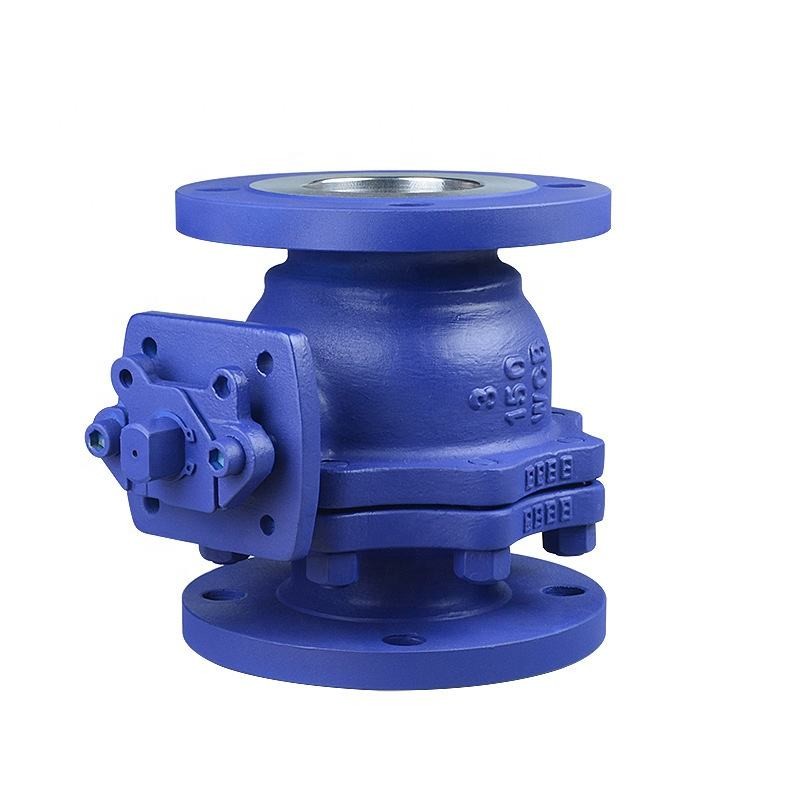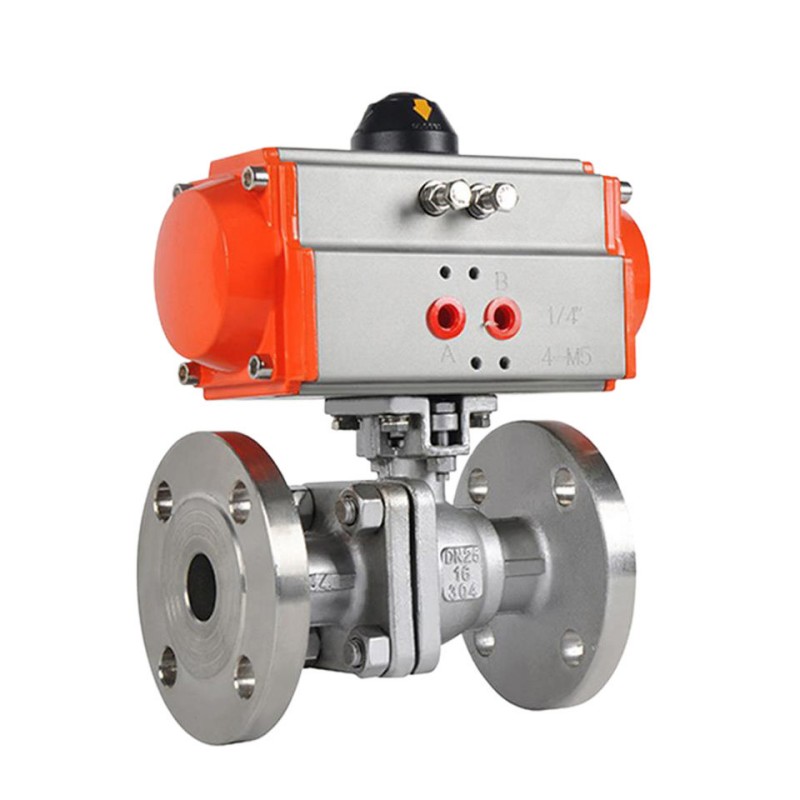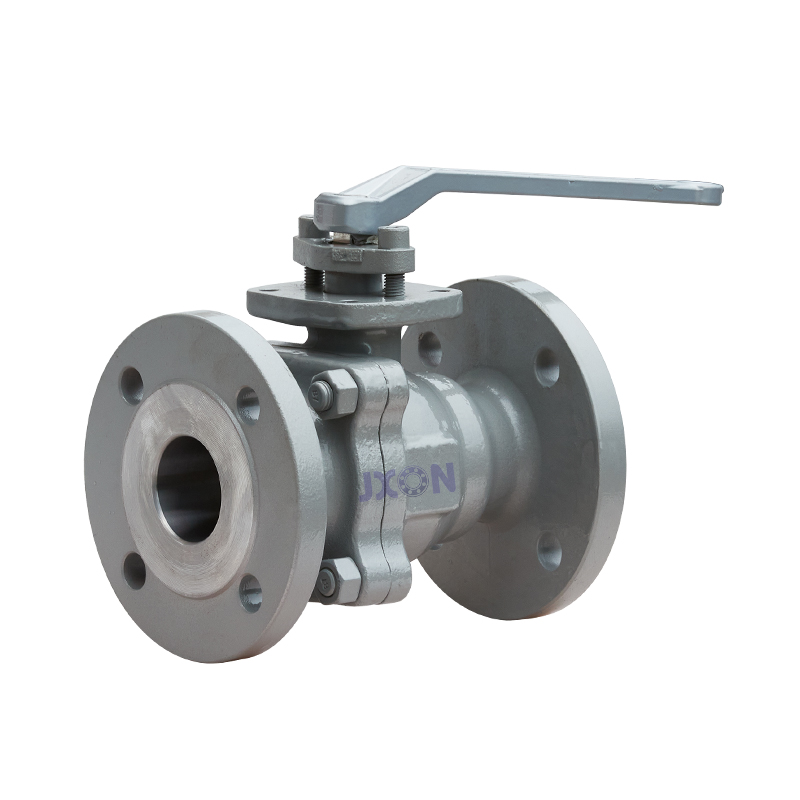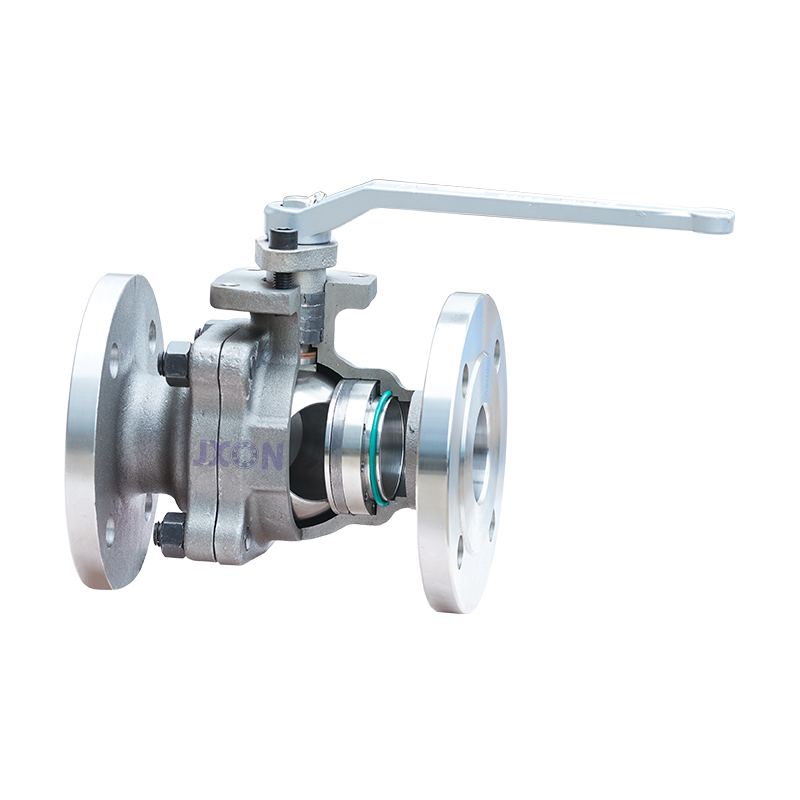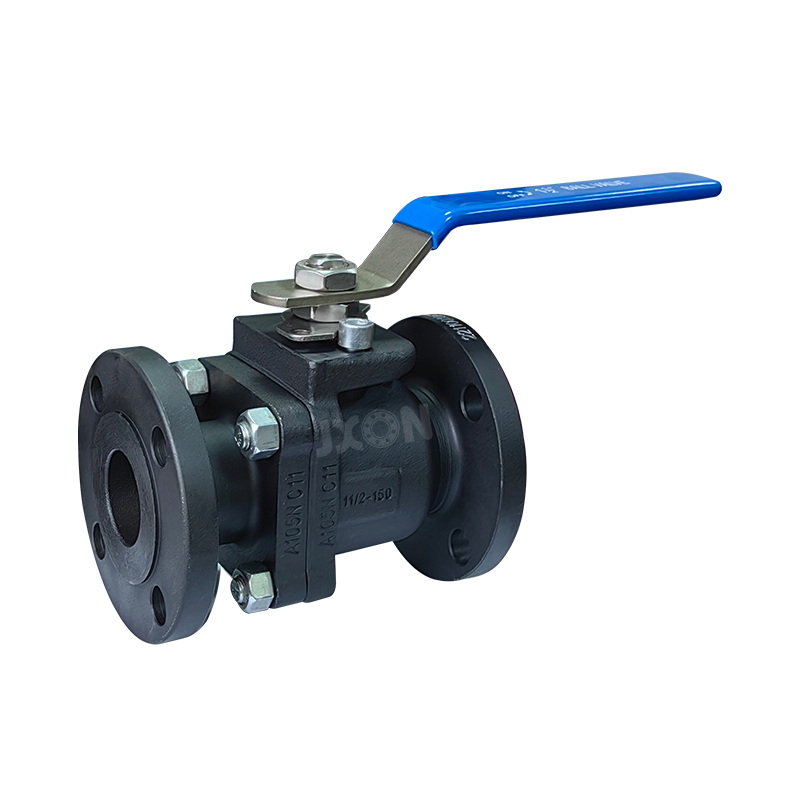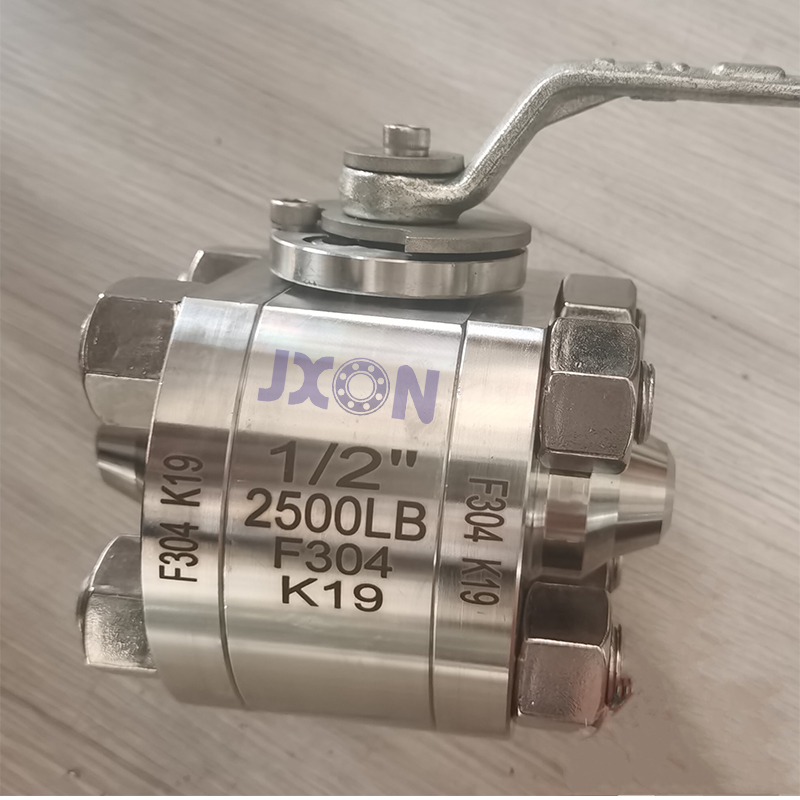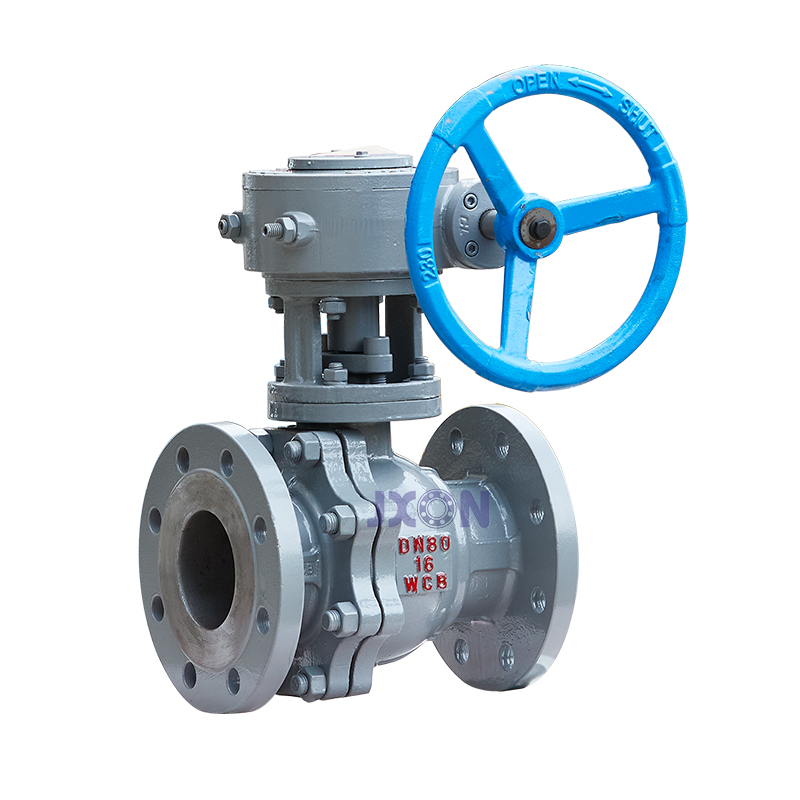Floating Ball Valve
JXON specializes in manufacturing ball valves. We can offer floating ball valves and trunnion mounted ball valves. For these two different kinds ball valves, they are used in different applications.
What is a floating ball valve?
Floating ball valves are generally considered to be a straightforward type of valve. Inside the valve’s body, there is a ball-like sphere that floats freely in the fluid and is held in place by valve seats since it has no structure to support it. During operation, the floating ball valve floats slightly downstream, causing the seating mechanism to compress under the ball. If the valve seat is disintegrated, the ball will float up and seal against the metal stem, providing a fail-safe design. There is a stem in the valve body that connects to a slot at the top of the ball, allowing it to rotate 90 degrees. This stem allows the ball to move laterally when upstream pressure acts on it, while the downstream seat improves the tightness of the valve’s seal. This allows the valve to close in either direction when liquid flows. The floating ball valve can be classified into full bore/port ball valves and reduced bore/port ball valves. When the diameter of through-hole in the ball is equal to internal diameter of pipeline, it is called a full port ball valve. If the diameter of the through-hole in ball is less than that of pipeline, it is considered as a reduced bore valves.
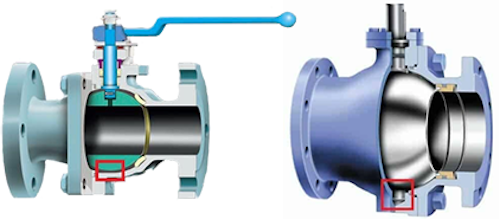
The applications of floating ball valves
Floating ball valves are suitable for working with medium and low pressure fluids such as water, solvents, acids, natural gas, as well as harsh working conditions involving media like oxygen, hydrogen peroxide, methane and ethylene, etc. Floating ball valves are widely used in various industries, and their bodies can be either one-piece or split.
Types of floating ball valves
One-piece ball valve
The one-piece floating ball valve is an evolution of the plug valve, it is achieved opening and closing by using a ball that rotates 90 degrees around the axis of the valve stem. The structure is simple, with good sealing performance and small driving torque, making it easy to operate and achieve rapid opening and closing. At present, one-piece ball valves are being developed for high temperature, large-diameter, high sealing performance and long life. They also have excellent adjustment capabilities and their reliability has reached a high level. As a result, they have partially replaced cast steel gate valves and cast steel globe valves.
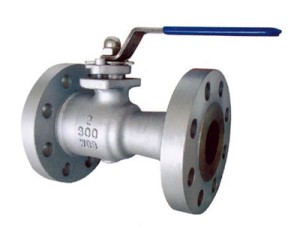
Two-piece floating ball valve
The two-piece floating ball valve consists of a left body and a right body, which are connected by threads and bolts or welding. The two-piece floating ball valve is the most commonly used valve in the industry, and it is suitable for various working conditions, including high temperature and high pressure.
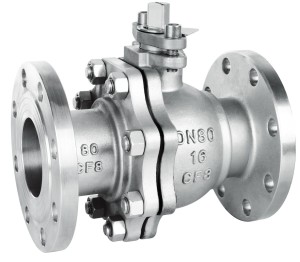
Features of the floating ball valve
1. Handle:The handle, which indicate the opening and closing state of valve, is designed as a flat square structure. It is aligned with the connecting eng of the valve stem to ensure that the flow hole direction is consistent with the handle. The ball valves are in the open state when the handle is parallel to the valve line, and the floating valves are in the closed when the handle is perpendicular to the valve.
2. Anti misoperation switch function:The floating ball valves are designed with a locking device in the stopper and gland flange, which will show its unique superiority when the valve is installed in the field.
3. Anti blow-out design: The floating ball valves are equipped with a blowout-proof structure on the stem. A shaft shoulder is designed at the end of the stem that touches the ball groove, and it's outer diameter is larger than that of the stem hole. The stem is top-mounted and has a gland structure, with the inner diameter of the gland hole smaller than that of the stem shoulder. The The stem is installed from the inside the valve body. The pressure rise in the valve body will not push the valve stem out of its cavity.
4. Anti-static device: The floating ball valves are designed with an anti-static device to prevent the generation and accumulation of static electricity on the ball due to the friction between the ball and seat during operation. Anti-static devices, such as stainless steel springs and balls, are provided between the valve stem and the valve body, as well as between the valve stem and ball. Therefore, the floating ball valve is suitable for flammable and explosive media such as petrol, natural gas, propane, etc.
5. Fire safe structure: There is a step with acurved surface next to the soft seat. When the working environment temperature is too high, the soft seat may melt or be damaged, the ball will directly contect to the step, this can effectively prevent the leakage of the pipeline medium.
6. Fire safe gasket: There is a seal with a stainless steel spiral graphite fireproof gasket in the medium flange(valve body and bonnet), and the structure utilizes metal to metal contact.
7. Leak-proof stem: A multi-ring graphite packing is adopted for the sealed packing on the stem and body, which prevent leakage of the medium.
Soft seated floating ball valves VS Metal seated floating ball valves
Floating ball valves can be soft seated and metal seated, with different sealing forms suitable for different working conditions.
Soft sealed floating ball valves
Valve seats components are provided on both the upstream and downstream sides of the valve. Each valve seat component consists of a valve seat, a valve seat ring, and a gasket ring. The most material used for seats is adopted PTFE, the valve seat ring is fixed in the valve seat by the gasket ring, and an O-ring is arranged between the valve seat and the valve body type sealing ring. On one hand, the valve seat and the valve body are sealed; on the other hand, it provides initial pretension of the valve.
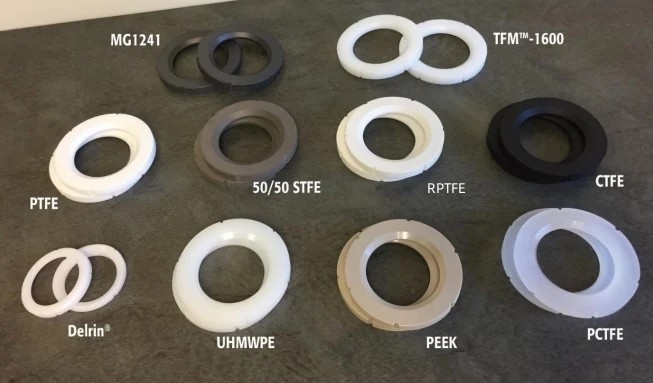
soft seat
Metal to metal sealed ball valves
The upstream side of the valve is equipped with a seat assembly, and the sealing surface is coated with a carbide. The downstream side of the valve body is directly welded, and the seat on the upstream side provides initial sealing pressure for the valve. The main sealing role is played by the seat on the downstream side, and installation direction of the valve is restricted. These seals are mainly used in applications with high temperature and the presence of particles, dust, slurry, etc. It is high temperature, high pressure, wear and erosion resistant, while also being a reliable seal. Stellite cemented carbide is the usual surface covering material.
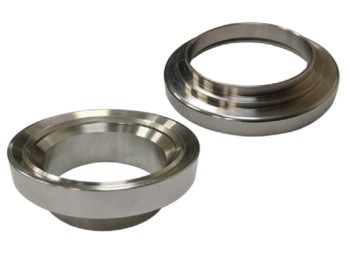
metal seat
Comparison of paremeters between soft seat and metal seat
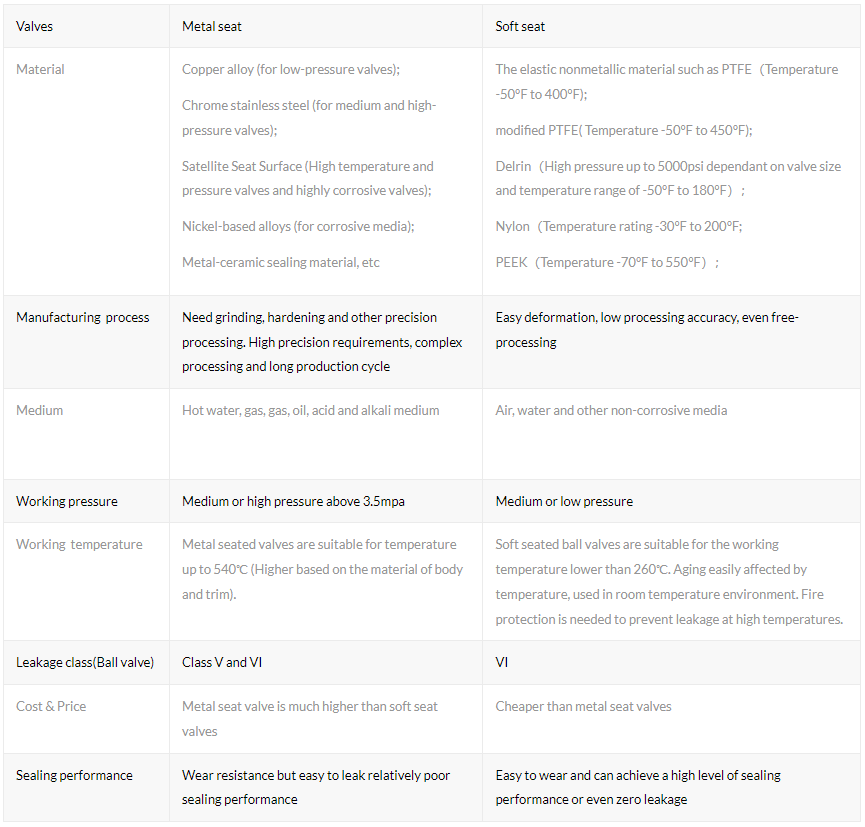
What are advantages of floating ball valves?
Advantages of floating ball valves
1. The fluid resistance is low, and the resistance coefficient is equals to that of a pipe with the same length.
2. The floating ball valves have simple structure, a small size and a light weight.
3. The structure of ball valves is tight and reliable. Currently, the most widely used sealing surface material for a ball valve is PTFE, which has good sealing performance and has been widely used in vacuum systems.
4. It can be easily operated with a fast shutter speed, and the rotation from fully open to fully closed is only 90 degrees, which facilitates remote control.
Disadvantages of floating ball valves
If soft sealed material such as nylon, PTFE are used for the ball valve seal, it is not suitable for the applications where the medium contains particles. Soft-sealed valves are impractial for high temperature and high pressure conditions.


